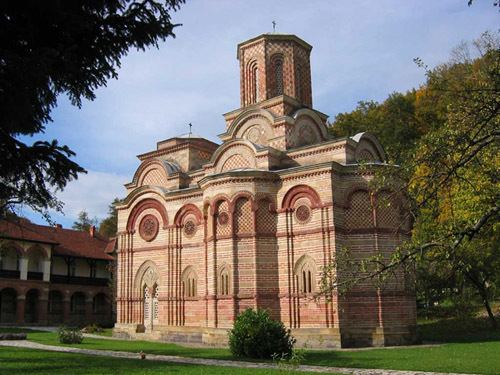 | ||
Eastern Orthodox Christianity is the main religion in Serbia, with 6,079,396 followers or 84.6% of the population, followed traditionally by the ethnic groups of Serbs, Romanians, Vlachs, Montenegrins, Macedonians and Bulgarians living in Serbia. The dominant church in Serbia is the Serbian Orthodox Church. Also, by ancient agreements with Serbian Orthodox Church, Romanian Orthodox Church has its own Diocese of Dacia Felix that operates among Orthodox Romanians in Serbian Banat.
Serbian Orthodoxy
The identity of ethnic Serbs was historically based on Orthodox Christianity; the Serbian Orthodox Church, to the extent that some people claimed that those who were not Orthodox, were not Serbs. The Christianization of the Serbian lands took place in the 9th century, and Serbia (the Serbian Principality) is accounted Christian as of 870, when the Eparchy of Ras and Braničevo were founded, confirmed by the Eighth Ecumenical Council (879-880). The Serbian bishoprics became part of the Archbishopric of Ohrid, after the Byzantine conquest of the Bulgarian Empire in 1018. The Slavic language replaced the Greek in liturgical language.
With the Great Schism in 1054 (the split between the Byzantine East and the Papal West), Serbia remained under Constantinople, while neighbouring Croatia remained under Rome. The Serbian Church was given autocephaly in 1219, when Archbishop Sava was recognized by the Ecumenical Patriarch.
